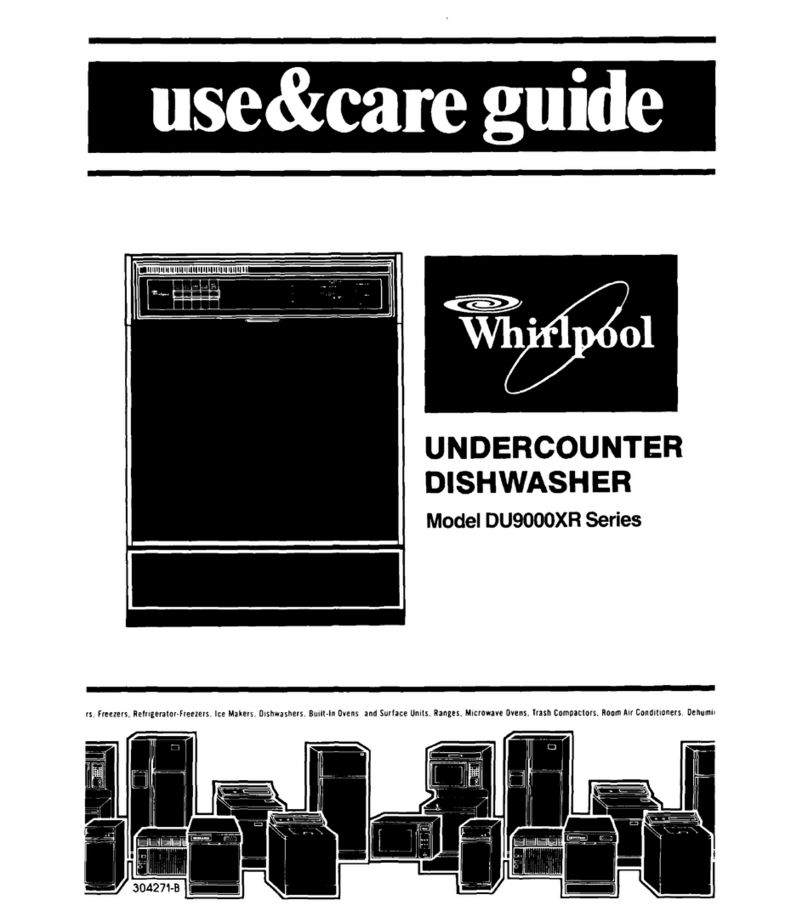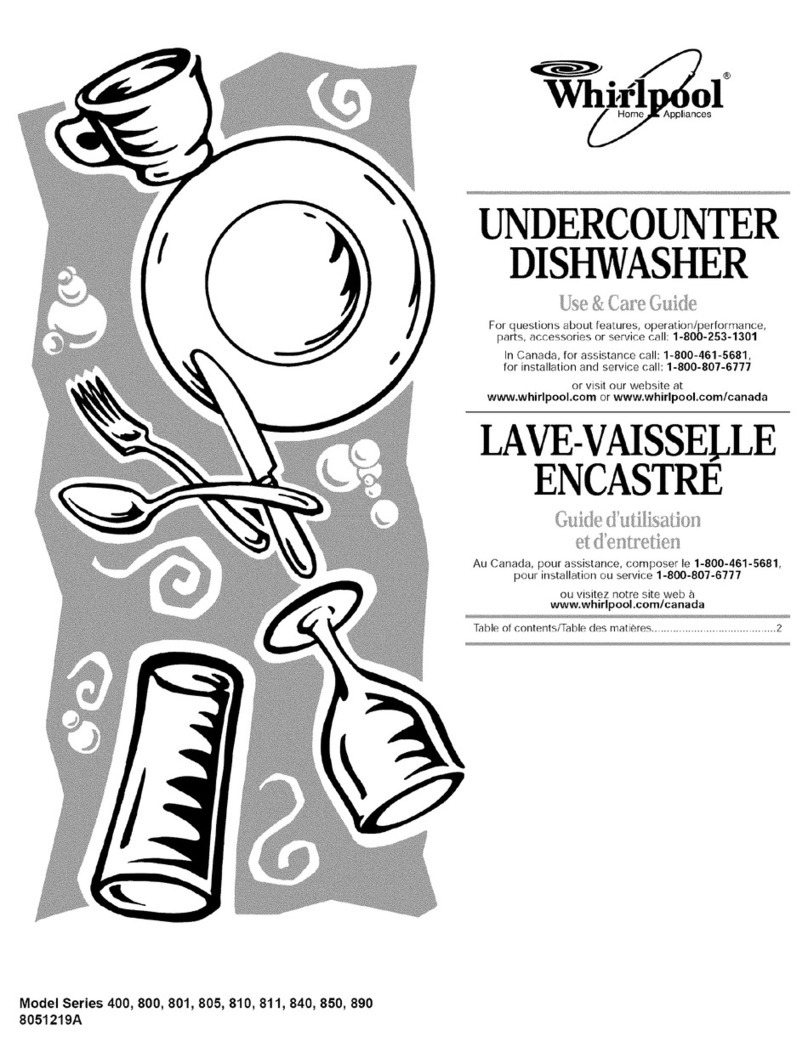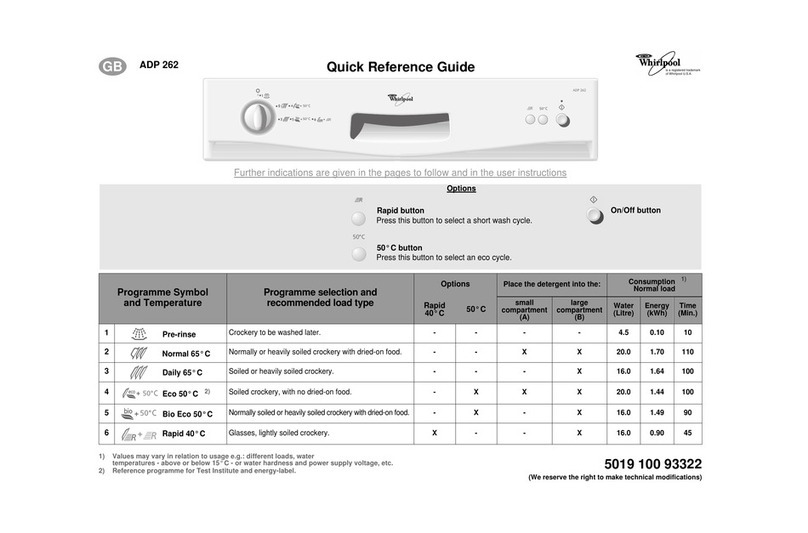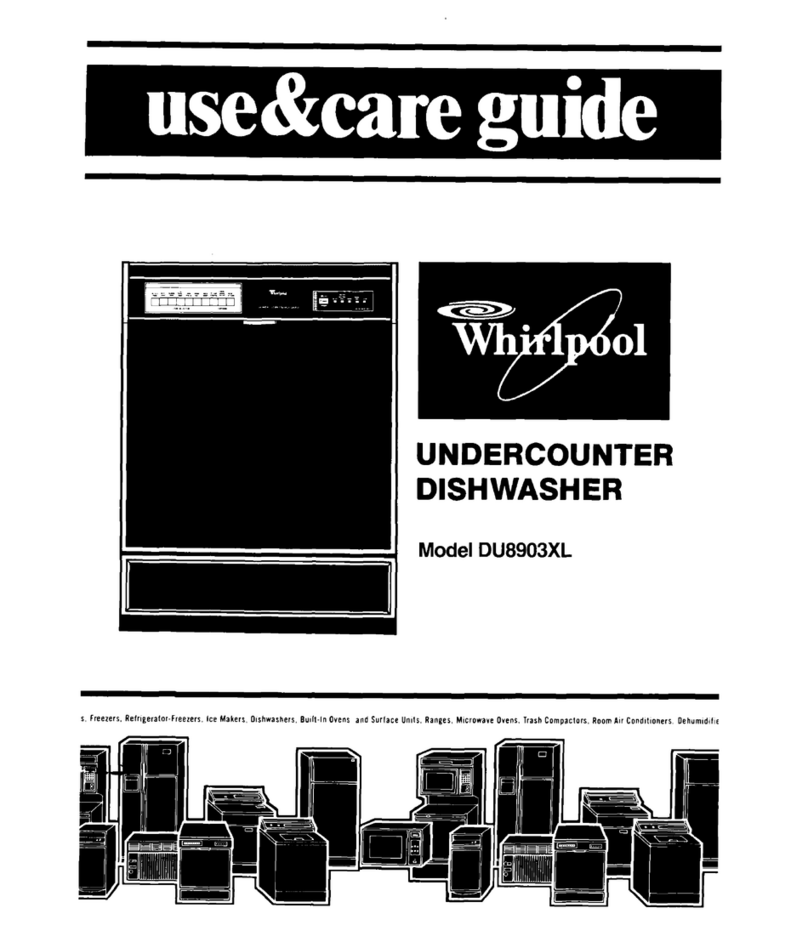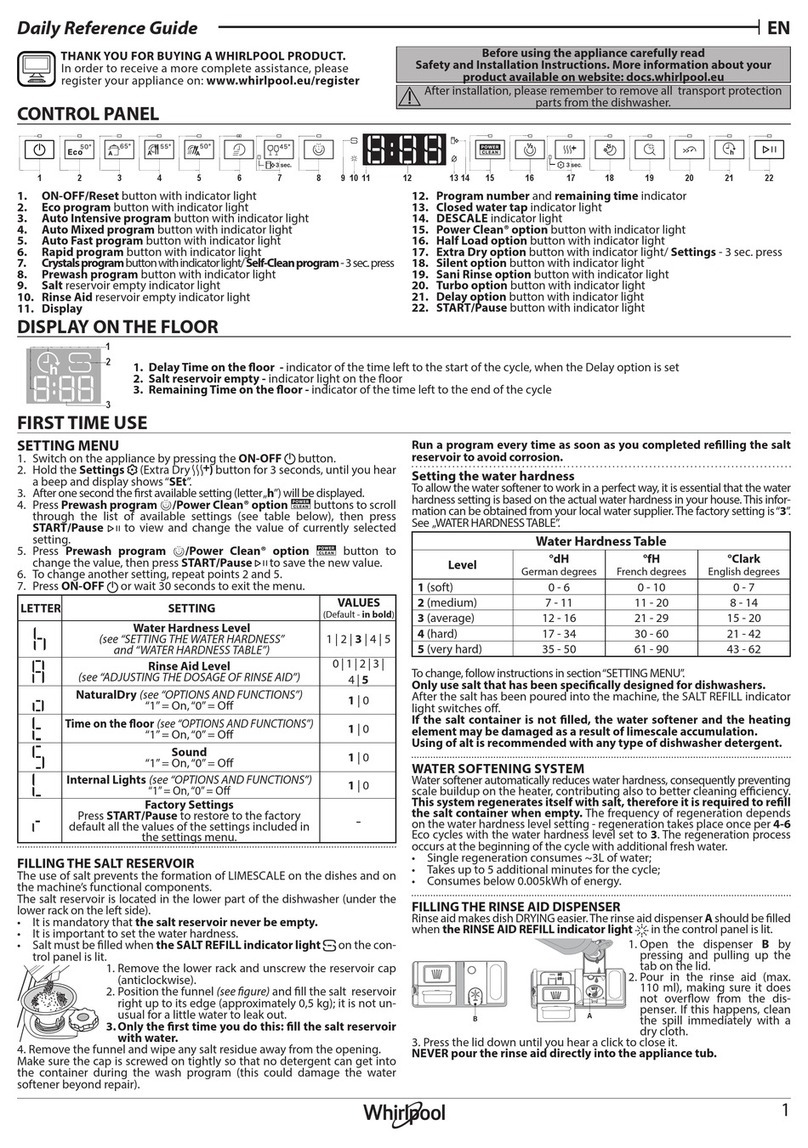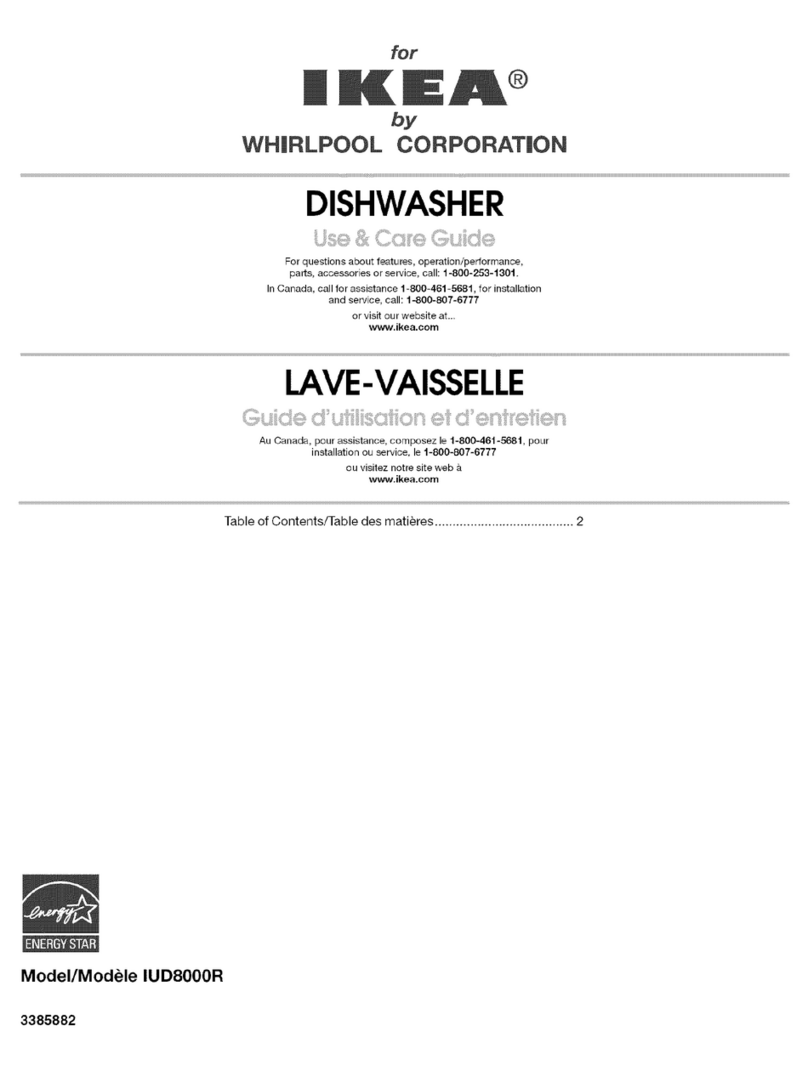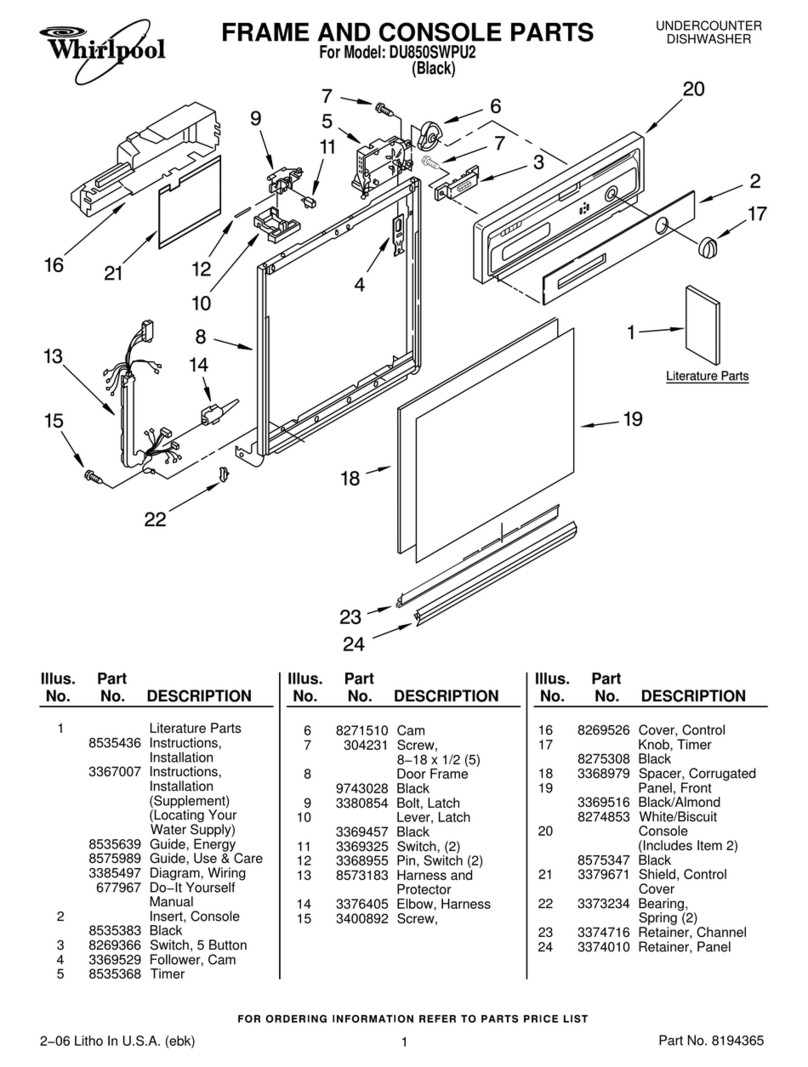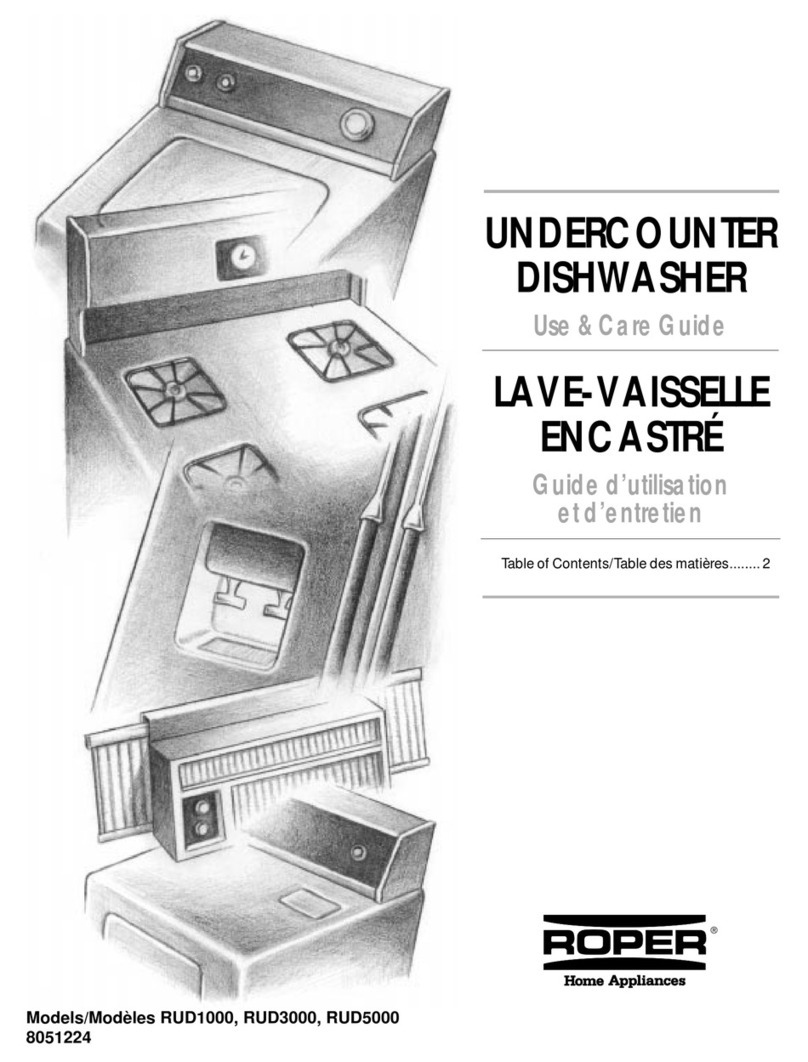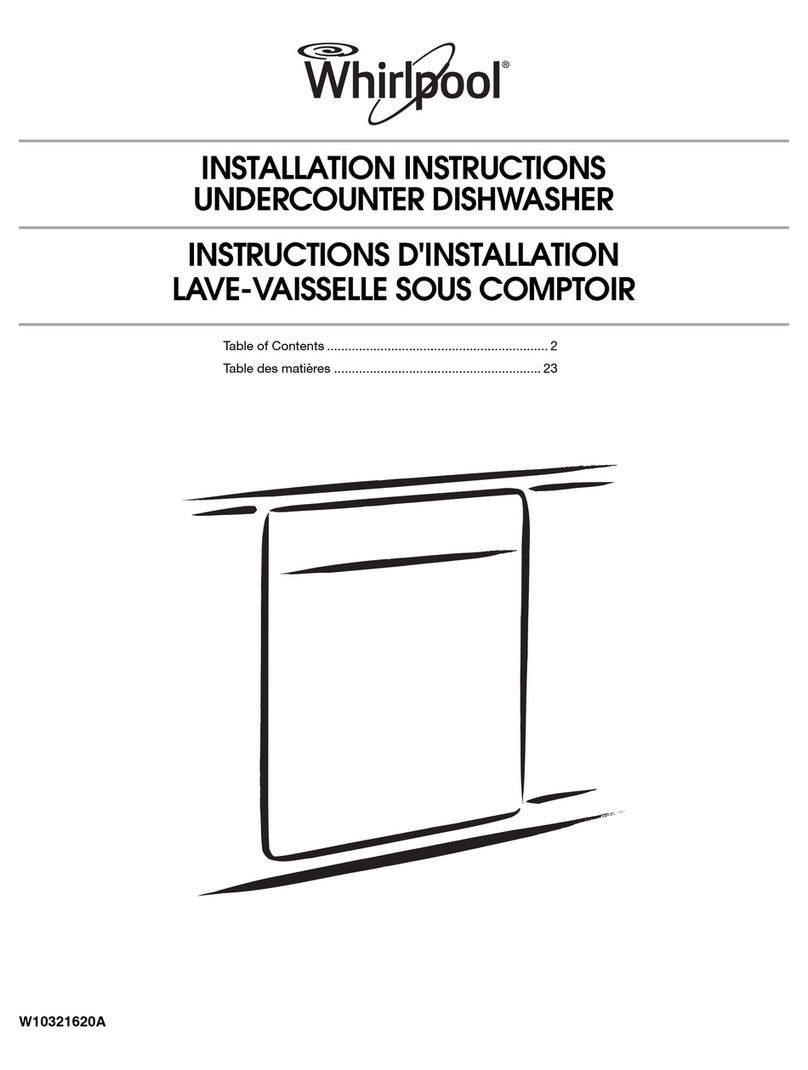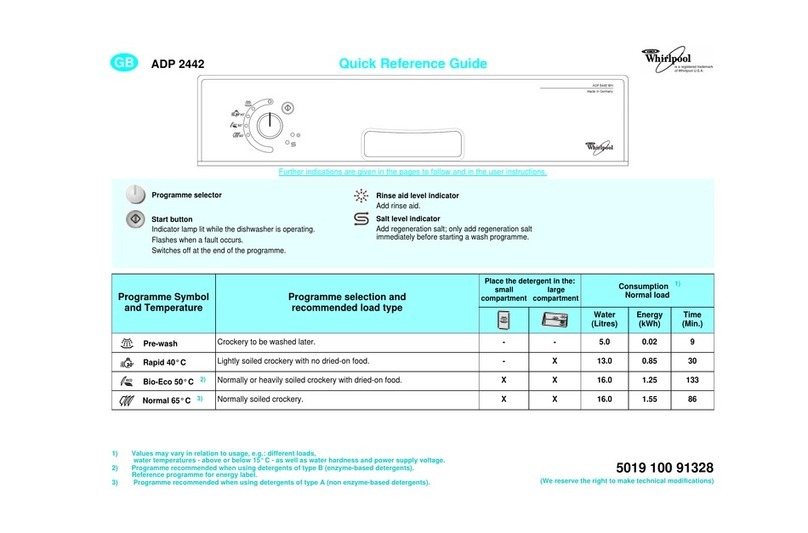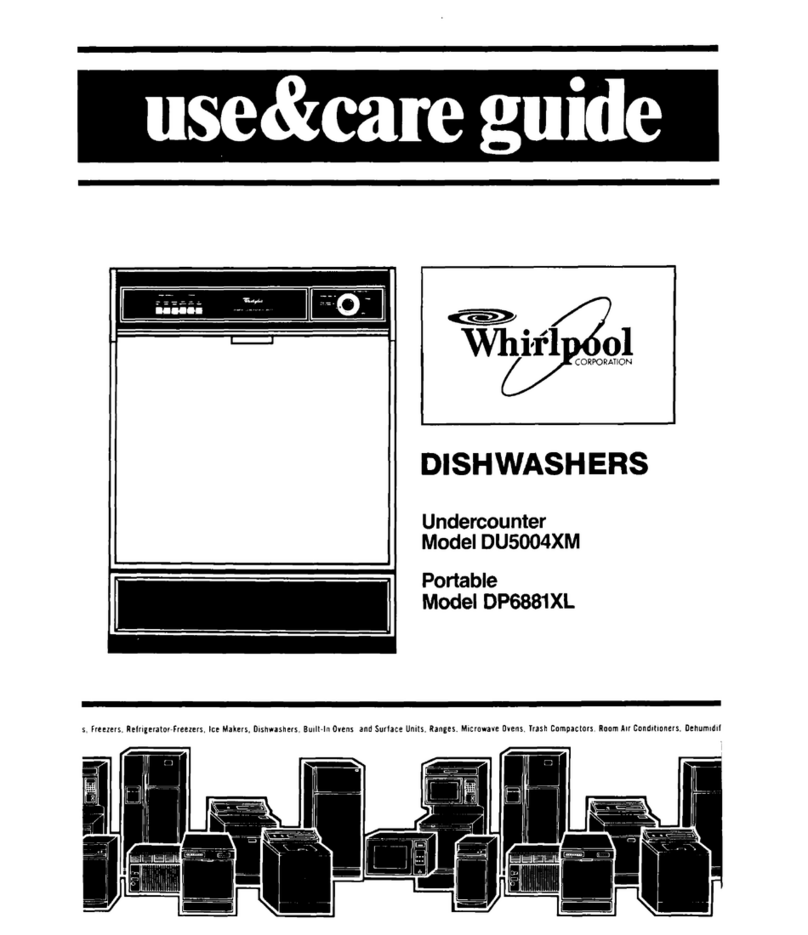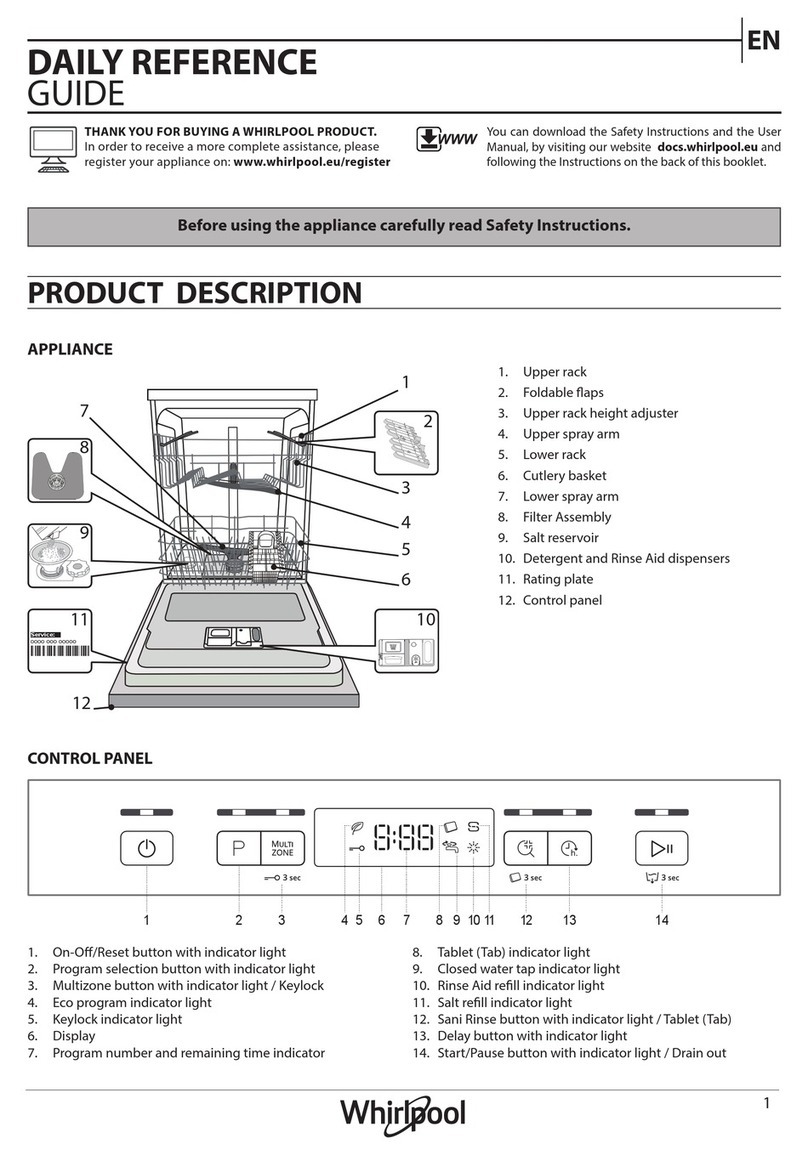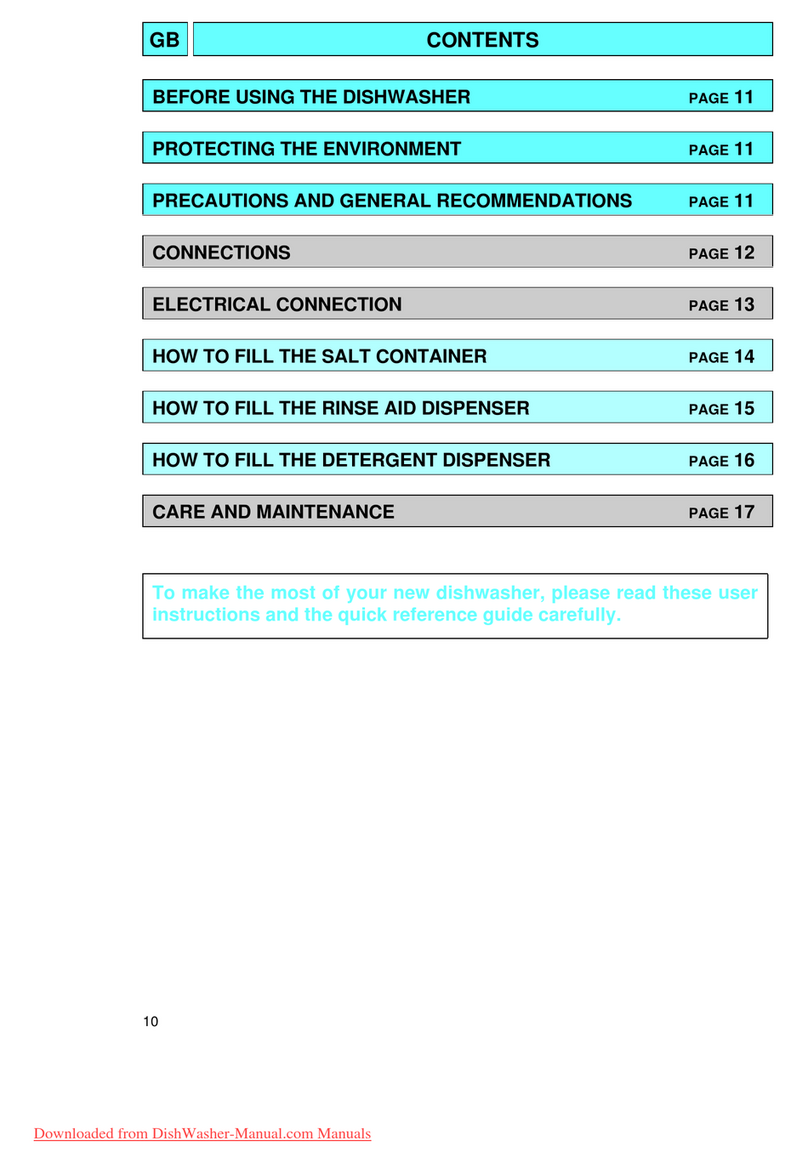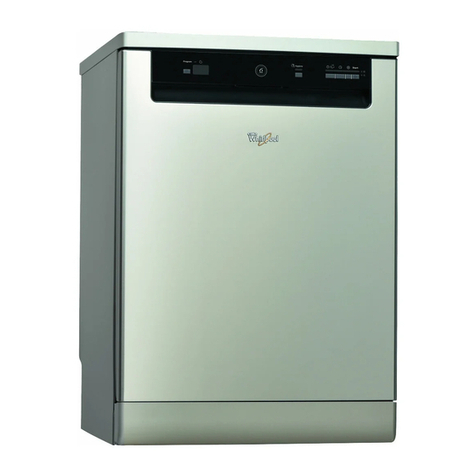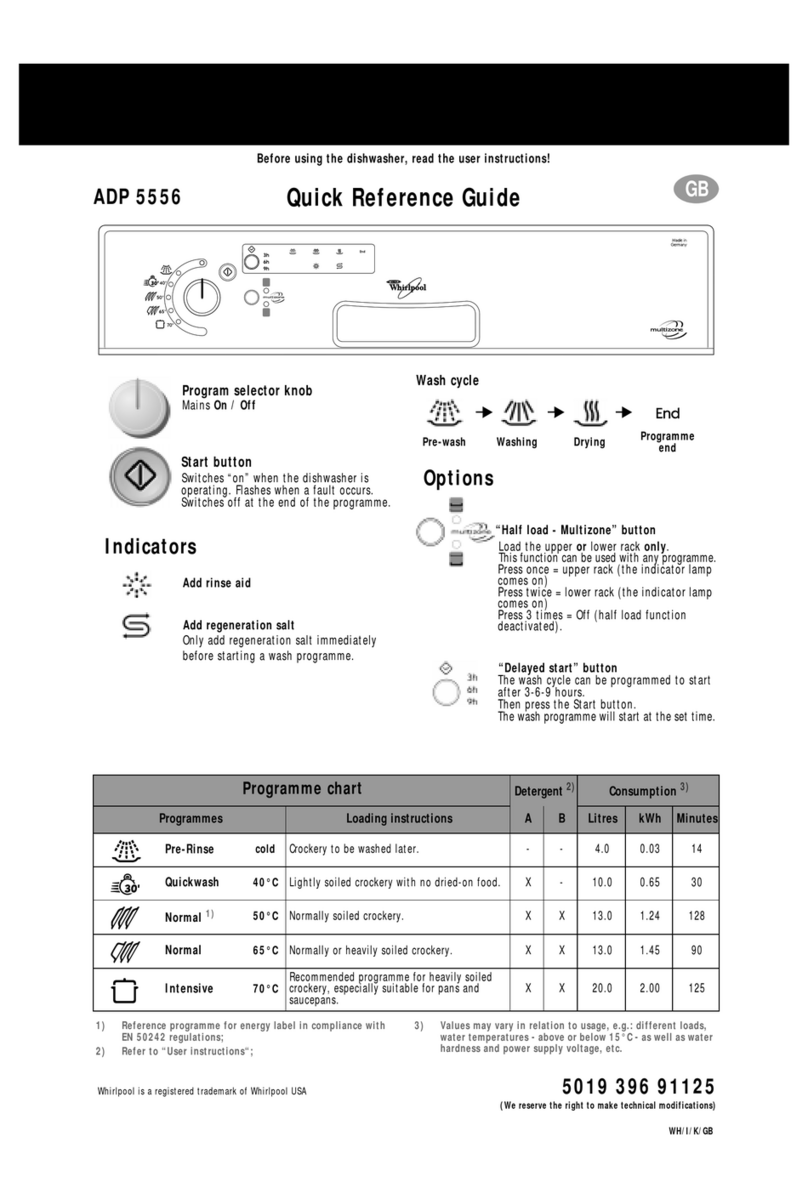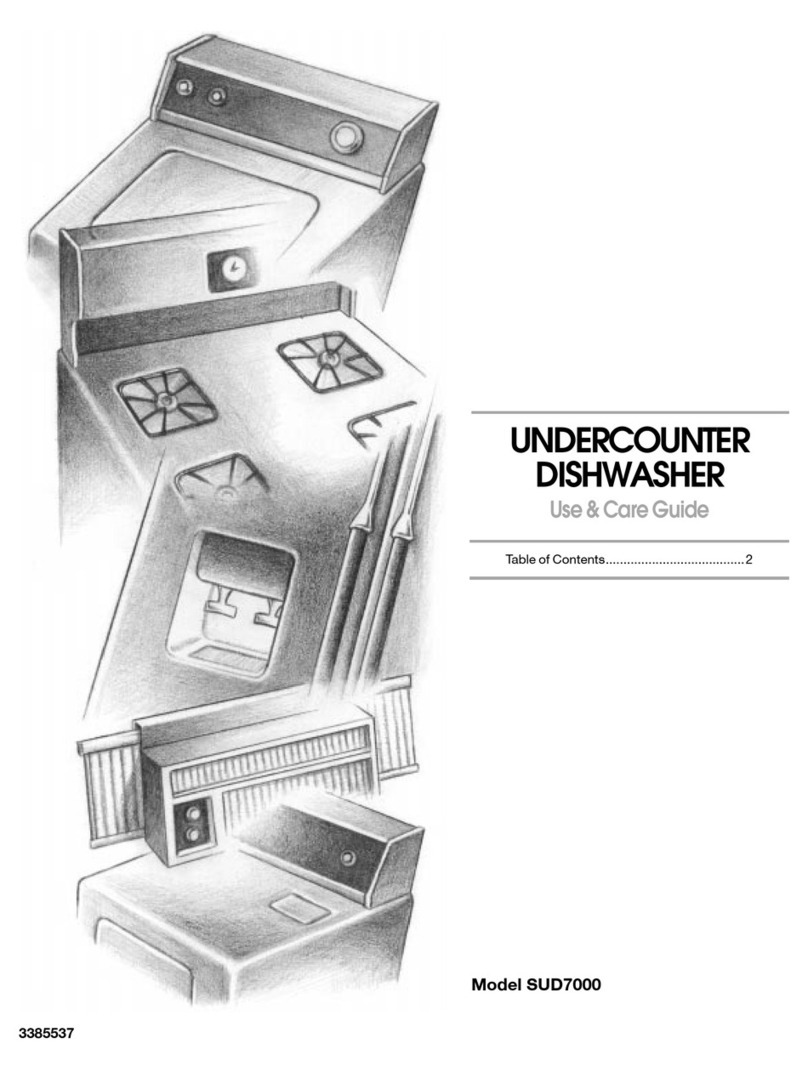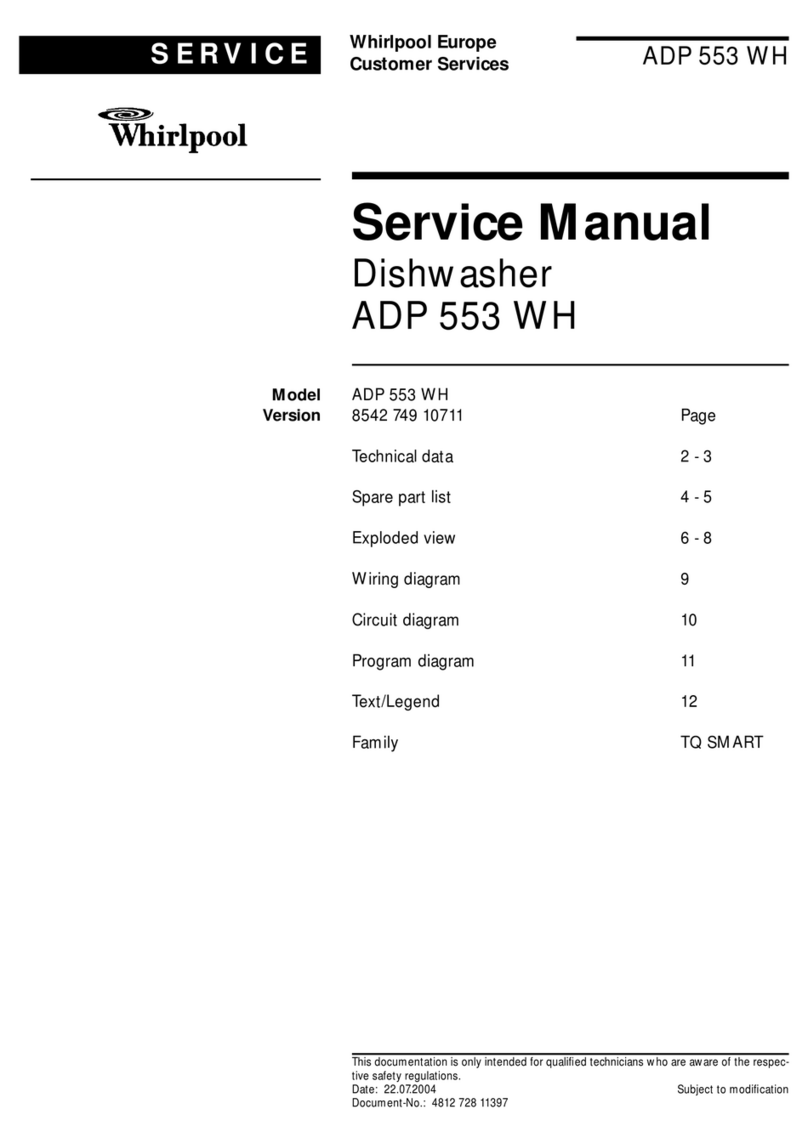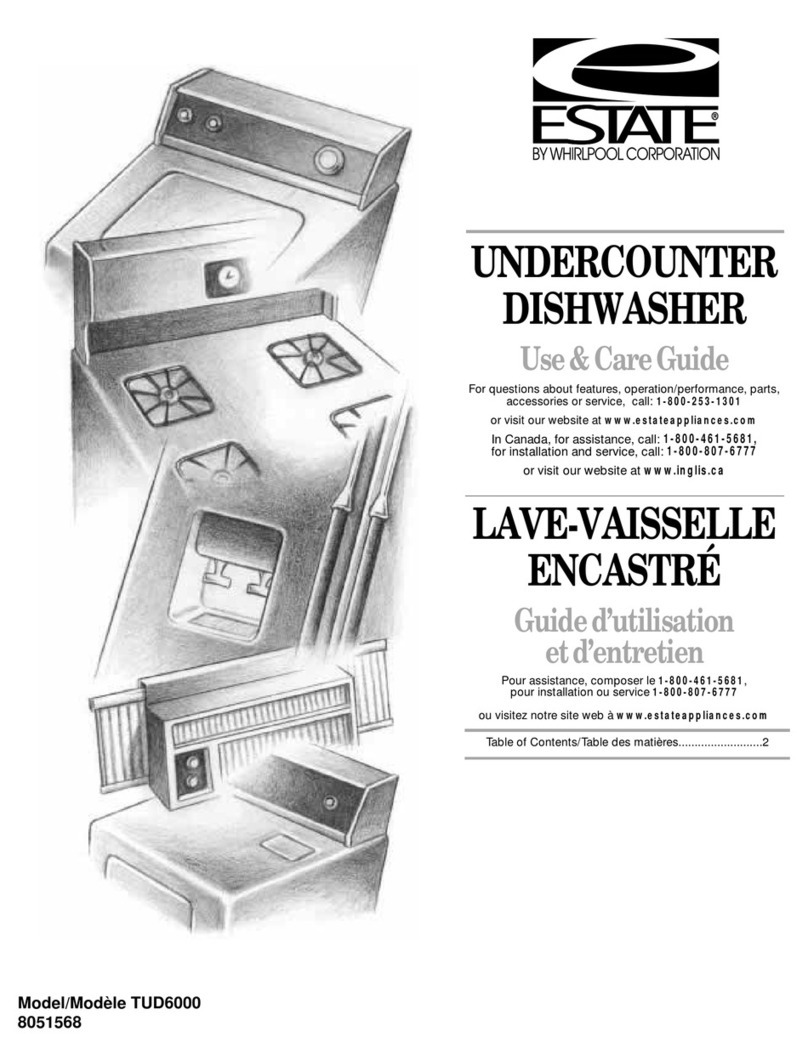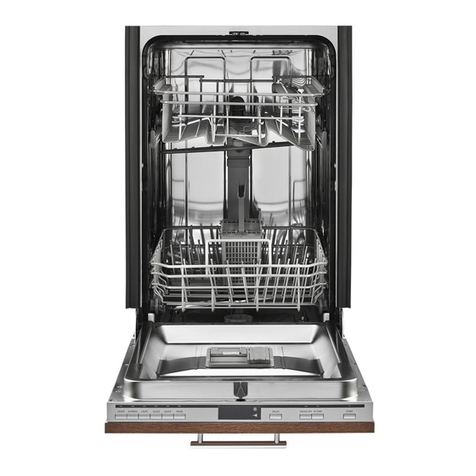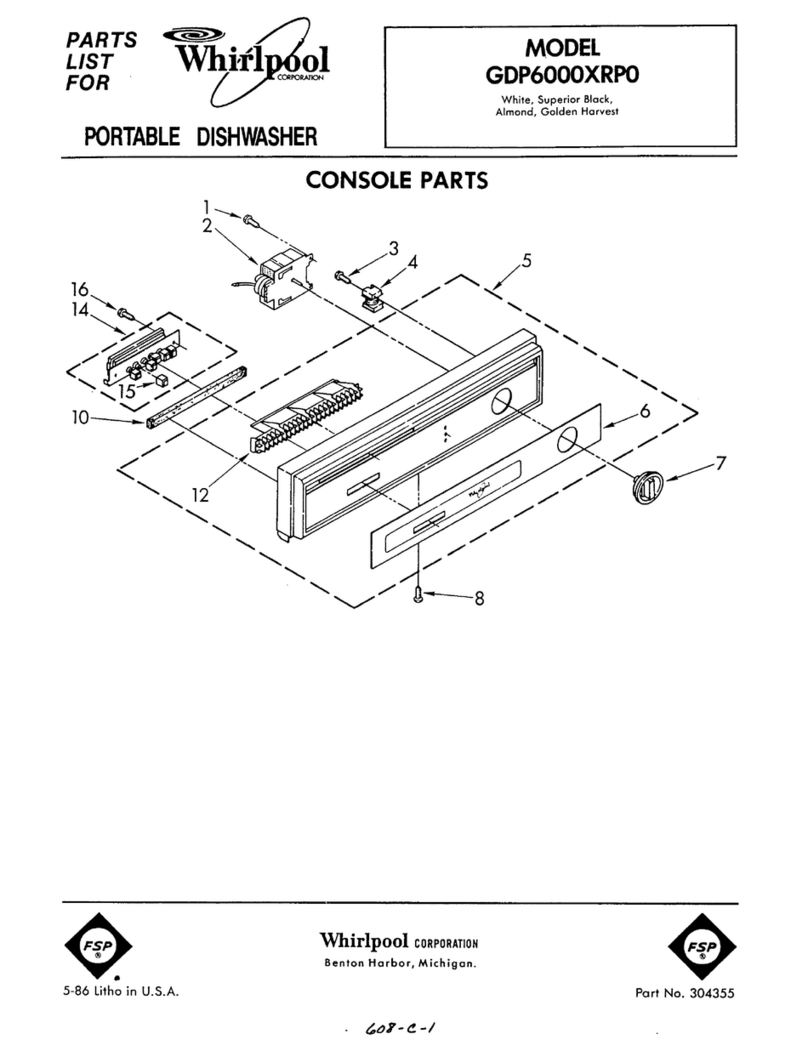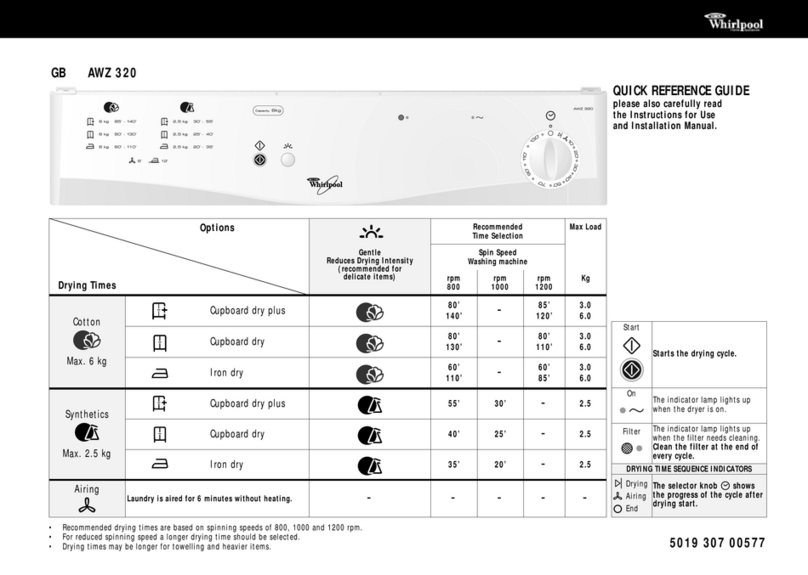Before you start...
Proper electrical, drain and water supply
lines must be available or must be installed Check location where dishwasher will
be installed. The location should
provide:
l
Easy access to water, electricity and
drainage lines.
l
Convenient loading - the best
position Is left or right of kitchen sink.
l
Opening that is square for proper
dishwasher operation and
appearance.
l
Cabinet front that is perpendicular
to floor.
l
Protection so that water inlet valve
and drain cannot freeze.
l
l/4’ minimum clearance between
motor and flooring to prevent motor
from overheating.
Proper installation is your responsibility.
Make sure you have everything necessary
for correct installation. It is the personal
responsibility and obligation of the
customer to contact 6 qualified installer to
as-sure that electrical and plumblng
installations meet all national and local
as specified within shaded area. Wiring
should not cross in front of motor or
dishwasher legs. See Electrical, Water and
Drain requirements.
IMPORTANT: Observe all governing
codes and ordinances.
codes and ordinances.
Corner location
2’ mln. door to
cabinet or wall. -
Electrical
ground is
required.
See “Electrical
requirements.”
cord or kink
power supply
cable between
dishwasher and
cabinet.
Cut openlngs - Grommet
Water Ilne: l/2’ hole required for
or larger. electrlcal cable
i
Draln Ilne: 1-l/2’ hole
or larger.
or
power supply
c
cord hole cut In
24’
Power supply cord: 1-l/2’ max. a metal
hole. cabinet.
Direct wlrlng: 3/4’ hole.
The unshaded area must be free
.‘I I--
of plpes or wlres.
Electrlcal outlet must be Installed underslde
In an adjacent cabinet.
A
----a---
L ’
1 --------
0‘
f
I /’ ,
4’
9
0
/ -/ ;lo. 4 ‘\‘, f
2-l/2’/
J p
10’ \
4
-- -
2’ k5’Y
b' "%L
-L _ -\ 2-112”
I\ “\
-5
2’
Electrical Shock Hazard
l
It is the personal responsibility and
obligation of the customer to
contact a qualified electrician to
assure that the electrical installation
is adequate and is in conformance
with the National Electrical Code,
ANSI/NFPA 70 - latest edition’ and
all local codes and ordinances.
Failure to follow these instructions
could result in electrical shock or
other personal injury.
l
Electrical wiring and components
must not contact any plumbing
material or drain hose.
l
Cabinet opening must completely
enclose sides, top and back of
dishwasher.
Failure to do so may result in personal
injury from exposed wiring.
Personal Injury/Product Damage
Hazard
Avoid opening dishwasher door
before dishwasher is installed.
Dishwasher, before it is installed, may
tip over when door is opened,
resulting in personal injury or product
damage.
- 23-718’ width +
+-- 24’ depth -
t
B-7/8’
mln.
helght
Coples of the standards listed may be
obtained from:
‘Natlonal Fire Protectlon Assoclatlon
Bat?erymarch Park
Qulncy, Massachusetts 02269
Read and follow the “Electrical
requirements”, ”Water requirements”
and “Drain requirements” sections
before installing dishwasher.
Figure 2 -
Tools and
materSah needed
for ins talla tion:
Electrical
requirements Wiring methods
Pick one method to follow, depending
upon your dishwasher and local codes.
a
Direct wire method
(cdble connecting dishwasher
to a junction box).
Electrical Shock Hazard
l
Electrical ground is required on this
appliance.
l
lf cold water pipe is interrupted by
plastic, non-metallic gaskets or
other insulating materials Do Not
use for grounding.
l
Do Not ground to gas pipe.
l
Do Not modify the power supply
cord plug. If it does not fit the outlet,
have a proper outlet installed by a
qualified electrician.
l
Do Not use an extension cord with
this appliance.
l
Do Not have a fuse in the neutral or
grounding circuit. A fuse in the
neutral or grounding circuit could
result in an electrical shock.
l
Check with a qualified electrician if
you are in doubt as to whether the
appliance is properly grounded.
Failure to follow these instructions
could result in serious injury or death.
Electrical Shock Hazard
Disconnect electrical power at the
service panel (fuse box or circuit
breaker box).
Failure to do so could result in serious
injury or death.
Recommended grounding
method -
1. Disconnect power supply.
2. Run flexible, armored or non-metallic
sheathed, copper cable (with ground-
ing wire) from fused disconnect, circuit
breaker or junction box through the 3/4”
cabinet hole to the dishwasher location.
The cable must extend 24” from the
back wall.
The hole cut through a wood cabinet
should be sanded until smooth.
The hole cut through a metal cabinet
must be covered with a grommet (Part
No. 302797), available from your local
dealer or parts supplier.
A U.L.-listed strain relief or conduit con-
nector must be installed at each end of
the power supply cable (at the dish-
washer and at the junction box). Wire
sizes (COPPER WIRE ONLY) must conform
with the rating of the dishwasher.
l
electric drill
l
PhillIDs screwdrlver
l
2 adjustable
wrenches
l
wlre strip er and
utlllty P
knl e
l
5/16’ and l/4’
nut driver or hex
socket
l
pliers
l
measurlng tape
l
flat-blade
screwdrlver
l
3 twlst-on wlre
connectors for 16-
gauge wire (not
shown)
l
plpe wrench
l
keyhole saw
l
tubing cutter
shown)
l
pipe-Joint
compound
.
(not
90” elbow wlth 318’
N.P.T. external
threads on one end.
The size of the other
end must fit your
water supply Ilne.
(not shown)
gloves (not shown)
.
Parts supplied for
installatfon:
If codes permit and a separate ground-
ing wire is used, it is recommended that
l
2 draln hose clamps
l
2, No.- 10 x l/2’ Phllllps-head screws
* draln hose
Remove parts from bag. Check that all
parts were supplied.
a qualified electrician determine that the
grounding path is adequate.
A 120-volt, 60-Hz, AC-only, 15- or 20-
ampere, fused electrical supply is
required. Tlme-delay fuse or circuit
breaker is recommended. It is
Panel
A
recommended that a separate circuit
serving only this appliance be provided.
The dishwasher must be connected with
copper wire only.
